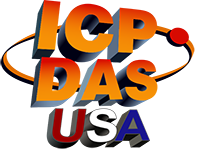
ICP DAS USA Inc.
ICP DAS USA is a leading manufacturer specializing in advanced industrial automation and control hardware and software. Our company provides a comprehensive range of cutting-edge solutions tailored to meet the diverse needs of industries such as energy and power, factory and machine, agriculture, aerospace, oil and gas, and more.
Our product portfolio encompasses a wide array of flexible and cost-effective offerings. We excel in developing state-of-the-art M2M (Machine-to-Machine) and "Internet of Things" (IoT) controllers, as well as protocol converters. These devices enable seamless connectivity and communication between various industrial systems and equipment.
Additionally, we offer remote data acquisition I/O modules that support a multitude of communication protocols. Our I/O modules are compatible with industry-standard protocols including Modbus RTU, Modbus TCP, CAN bus, Profibus, Profinet, Ethernet/IP, HART, EtherCAT, DeviceNet, BACnet, and Wi-Fi. This extensive protocol support ensures interoperability and ease of integration with existing infrastructure.
At ICP DAS USA, we pride ourselves on our commitment to delivering innovative solutions that empower businesses to optimize their operations and enhance productivity. With our cutting-edge products, industry expertise, and dedication to customer satisfaction, we strive to be the go-to choice for industrial automation and control requirements.
Signal Conditioners and Isolators
Results:
10
Series
Input Range (Current, Voltage)
Output Range
Input Type
Output Type
Isolation
Input Range (Additional)
Features
Operating Temperature
Termination Style
Mounting Type
Type
Voltage - Supply
Results remaining:10
Applied Filters:
ICP DAS USA Inc.
About Signal Conditioners and Isolators
Signal conditioners and isolators are electronic devices used in industrial applications to enhance the performance and safety of measurement systems.
Signal Conditioners: Signal conditioners are used to convert signals from one level or type to another, typically for sensor measurements. These devices help to improve the accuracy and reliability of the measurement system by amplifying, filtering, or linearizing the signals. Signal conditioners can be used with various types of sensors, such as thermocouples, RTDs, strain gauges, and pressure transducers.
Signal conditioners can be categorized based on various parameters, such as input type, output type, isolation voltage, and additional features. Input types could include voltage, current, or resistance, while output types could be voltage, current, or frequency. Isolation voltage refers to the level of electrical isolation between the input and output circuits. Additional features could include surge protection, signal inversion, or programmable settings.
Isolators: Isolators are devices that separate or isolate one circuit from another in regard to power. They help to prevent ground loops, reduce noise, and provide electrical isolation between different parts of a system. Isolators can be passive or active, depending on whether they require an external power supply.
Isolators can be categorized into various types, such as isolation amplifiers, passive isolators, and signal conditioners. Isolation amplifiers use transformer or optical techniques to provide galvanic isolation between different circuits. Passive isolators, on the other hand, rely on magnetic or capacitive coupling to provide isolation. Signal conditioners can also act as isolators, providing electrical isolation between the input and output circuits.
Isolators can also be defined by various parameters, such as input voltage range, output voltage range, isolation voltage, and common mode rejection ratio (CMRR). Input voltage range refers to the range of voltages that can be applied to the input circuit, while the output voltage range refers to the range of voltages that can be obtained from the output circuit. The isolation voltage indicates the level of electrical isolation provided by the isolator, while CMRR represents the ability of the isolator to reject common-mode signals.
In summary, signal conditioners and isolators are electronic devices used in industrial applications to improve the accuracy, reliability, and safety of measurement systems. Signal conditioners convert signals from one level or type to another, while isolators provide electrical isolation between different parts of a system. These devices can be categorized based on various parameters, such as input type, output type, isolation voltage, and extra features, and are critical components in many industrial applications.

.jpg)
.jpg)







